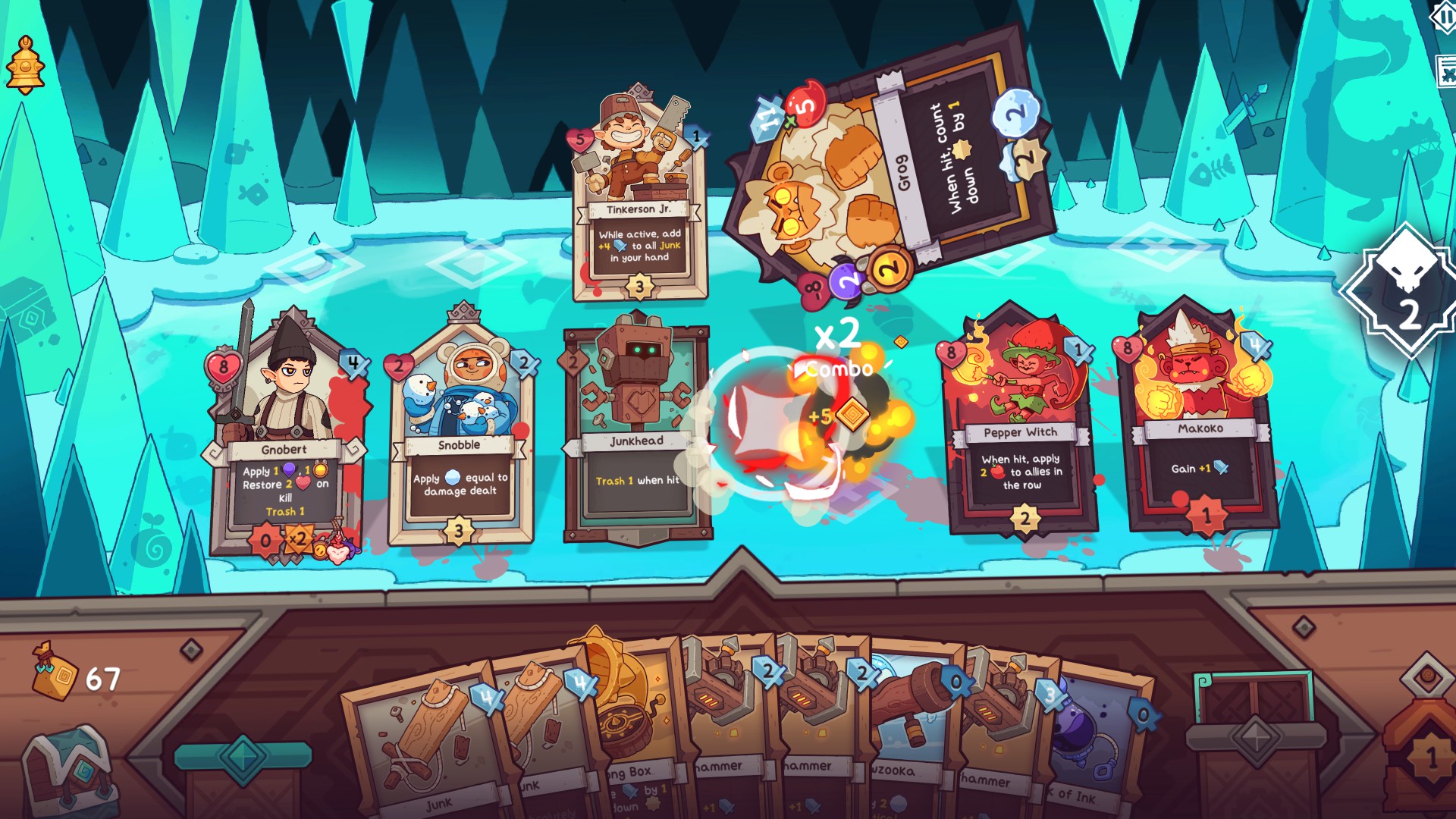Our Verdict
A perfect balance of accessibility and strategic depth, elevated by charming visuals and buckets of personality.
PC Gamer's got your back
What is it? A deck-building roguelike set in a frozen world.
Expect to pay: TBC
Developer: Deadpan Games, Gaziter
Publisher: Chucklefish
Reviewed on: AMD Ryzen 9 5900X, 32GB RAM, Nvidia Geforce RTX 3080
Multiplayer? No
Link: Official site
Steam Deck: Supported
In the world of Wildfrost, the sun is dead, evil forces corrupt all they touch, and everywhere is blanketed in ice and snow. And yet, starting it for the first time, the thing you'll be struck by is how cute and cosy it all looks. Its card-based battles are similarly deceptive—simple rules and effects make them seem tame and straightforward at first, but before you know it you're up to your knees in brain-twisting strategy.
Wildfrost is a deck-building roguelike, reminiscent of Slay the Spire and Monster Train. After picking one of three randomly generated (and all adorable) adventurers, you set out across a map, picking nodes to visit in order to gain cards and buffs, between turn-based battles against the tundra's intimidating inhabitants. Lose a fight—and you will, often—and you're thrown back to your village, where you can check out any permanent items you've unlocked before setting out on another run.
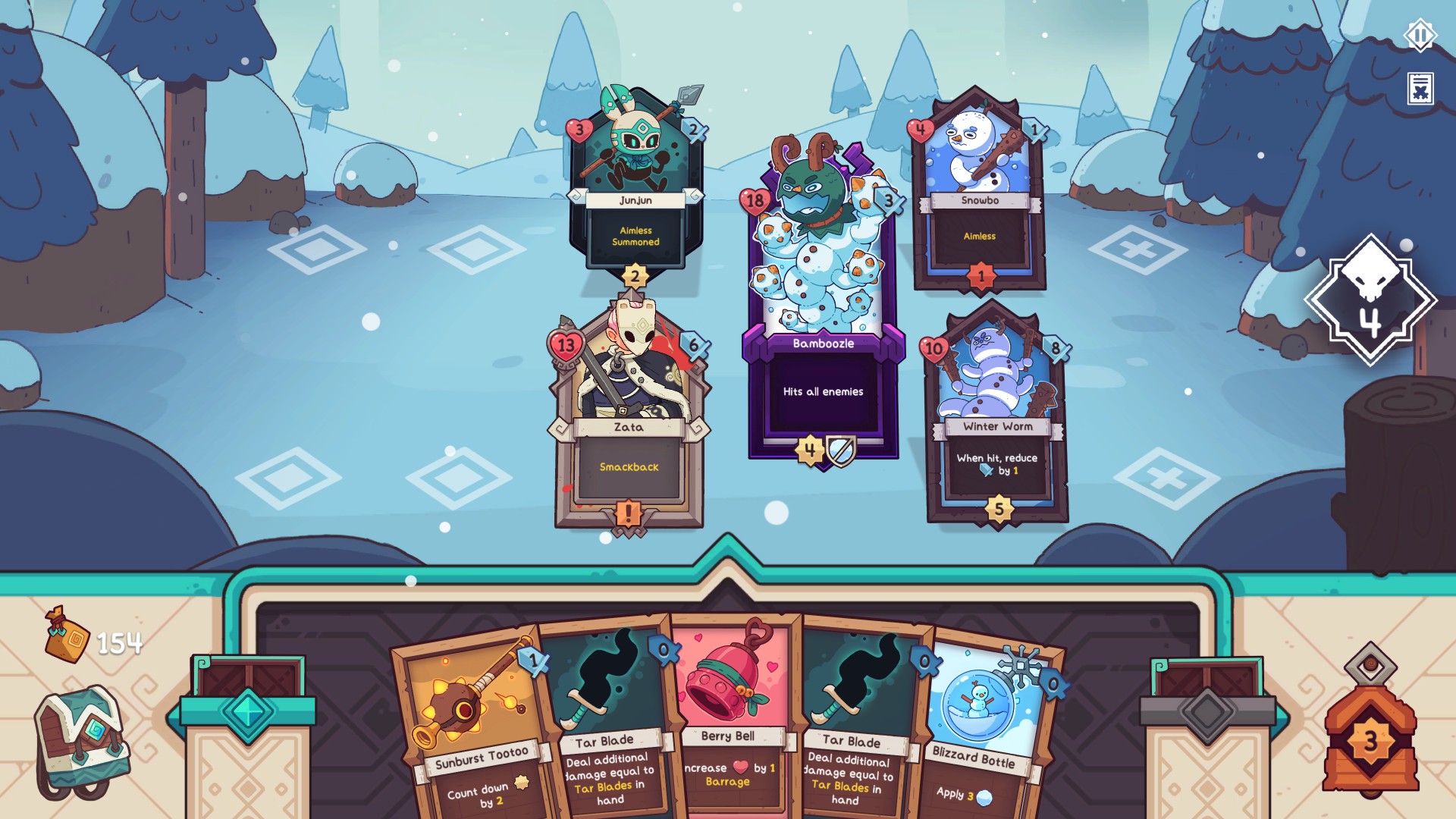
Fights take place across two lanes, each with room for three allies and three enemies. Most of your cards are instant effects—such as inflicting damage on a foe or freezing them—but a precious few are hero units that can be placed in a lane. Once played, characters don't immediately attack—instead, each has a countdown that ticks along each turn until they act, with enemies following the same rule. You can only play one card a turn, but you can rearrange the order of your heroes freely—that's important, because each friendly or hostile attack will target a specific point in the lane they're currently in.
It all comes together into a wonderfully layered puzzle. Not only do you have all the information about what will happen each turn but, thanks to the countdowns, what's coming as far as five or six turns from now. Succeeding means not only figuring out when to use key cards, but also constantly shuffling your formation to ensure your key damage dealers have their focus where you need it, and your tanks are absorbing the strikes coming back your way. Over the course of a full battle, it becomes a game of survival—if your leader dies, it's game over, and even your allies can't be sacrificed without good cause, because they'll then take a hefty 'injured' debuff into the next fight. Every hit has to be perfectly orchestrated to land where you want it—whether it's one you're dishing out, or one coming at you.
It's like watching the cast of Adventure Time go on a skiing holiday.
Finding the right strategies can be difficult—and even a little overwhelming—but importantly never because you feel like you're lacking any key information. The game's presentation is brilliantly clean and simple, conveying everything you need to know at a glance with colourful icons and a simple but effective UI. It makes learning to play a breeze, and whenever the game throws a new mechanic at you, it's always easy to understand how it fits into the wider tactical tapestry.
That clever presentation is enhanced by an utterly charming, cartoony art style—it's like watching the cast of Adventure Time go on a skiing holiday. Wildfrost's world is full of unique and adorable creatures, from wooden robots to berry men to crystal crabs, and that sense of fun extends to the game's mechanics, too. Instead of armour, you give your heroes acorn shells to protect them, and you buff their damage with hot chilli peppers. To make a card a free action to play, you attach a "Noomlin" to it, a happy little goat creature that pokes its head out from the top of the card and leaps off gleefully when you play it. It's just bursting with personality, and in a crowded genre, it's surprising how refreshing it is just for sometimes familiar effects to not be named and animated as you expect.
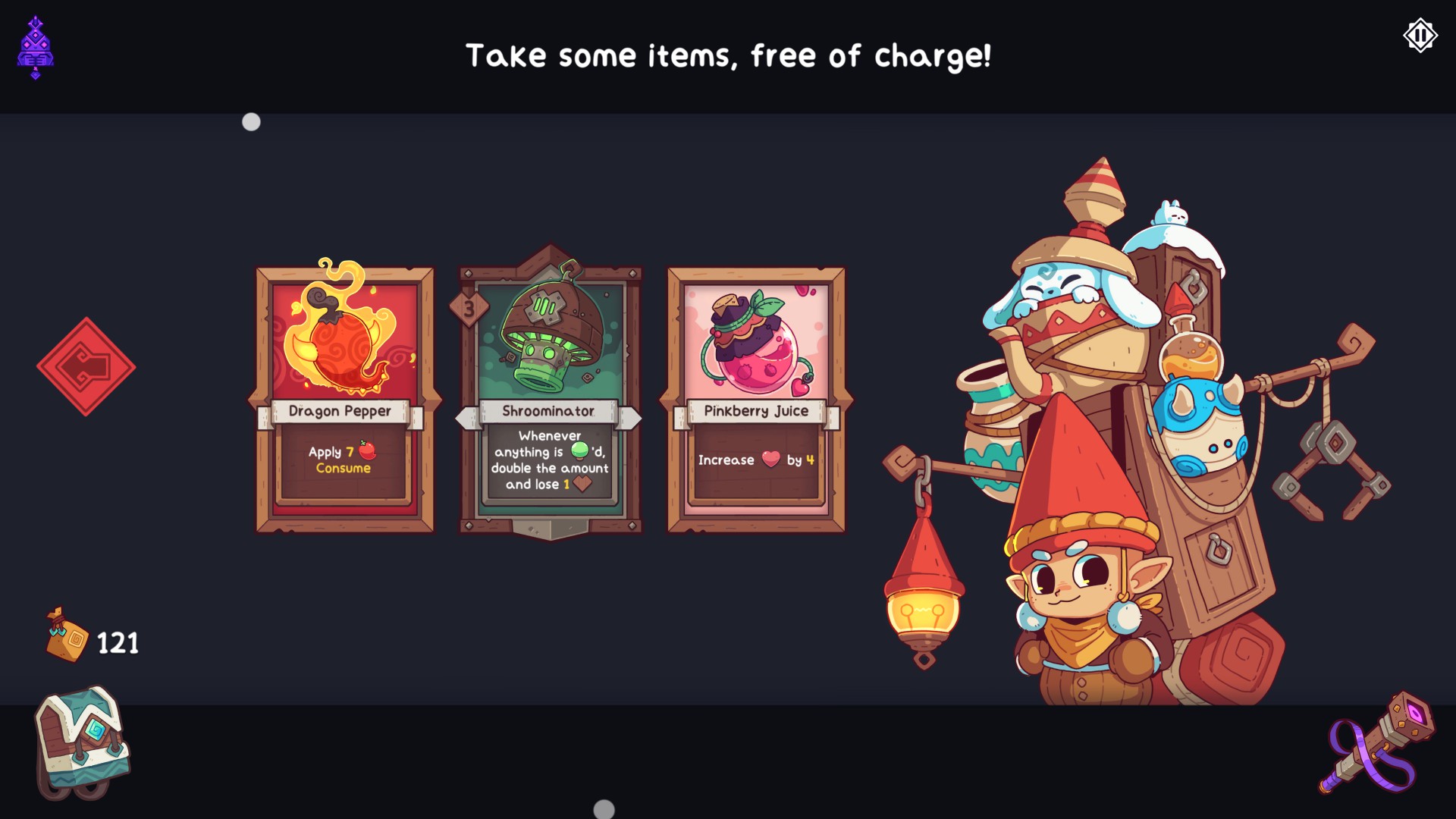
Similarly imaginative and memorable are the game's enemies. Every fight is a series of waves, culminating in a tough final opponent—basically making each battle its own boss fight, demanding its own tactical approach. From a towering robot that forces you to shuffle your team around under its targeted bombardments, to a wildcat in bone armour that retaliates every time it's struck, to a giant penguin who gets stronger every time you kill off one of his horde of minions; they're all unique challenges and endearingly strange creations. It's all killer, no filler—every fight feels like a significant and interesting challenge and an important stepping stone towards your final goal.
That goal: Reach the final boss, with a deck beefy enough to beat him. Getting to that point takes hard-won knowledge—not just of what he can do, but of what cards and buffs you should pick up on your journey. Events along the road provide just the right mix of randomness and control as you seek out powerful cards, trim away weaker ones, add buffing 'charms' to them that can completely change their role, and even duplicate your favourite ones. Even by the end, decks are lean—especially because, once a unit is played, it's out of your deck unless you bench it for a healing rest—allowing you to really focus on a consistent strategy.
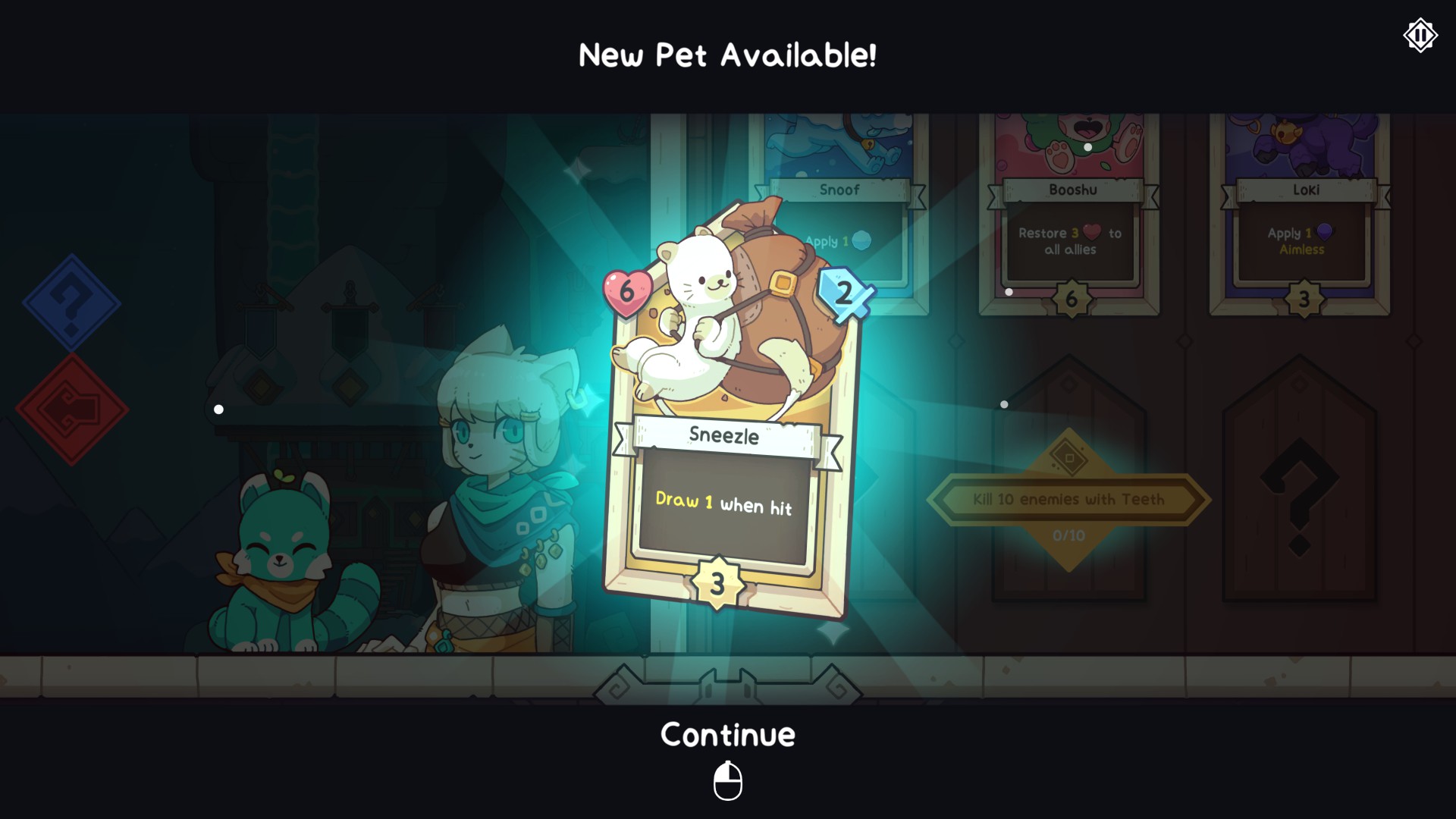
Taken as a modest but punchy 12-hour challenge, it's a breath of fresh (cold) air for the genre.
Once you do manage to beat the final boss, the game delivers a twist so devilishly clever that I don't want to spoil it here—but suffice to say, it ensures that the last fight is a different and interesting challenge every time you face it, forcing you to always be adapting and trying new things on subsequent runs.
The goal is to keep you always coming back for more, and Wildfrost does have that magical just-one-more-go quality to it. But as it stands, I don't think it has quite enough variety and progression to sustain that for as long as fans of the genre may expect. I've got 200 hours in Slay the Spire and there's still stuff I haven't achieved—after about 12 hours with Wildfrost, I feel like I have seen most of what it has to offer. They were a very fun 12 hours, but it does feel like it would need some substantial DLC or post-launch updates to reach the heights of replayability of its peers.
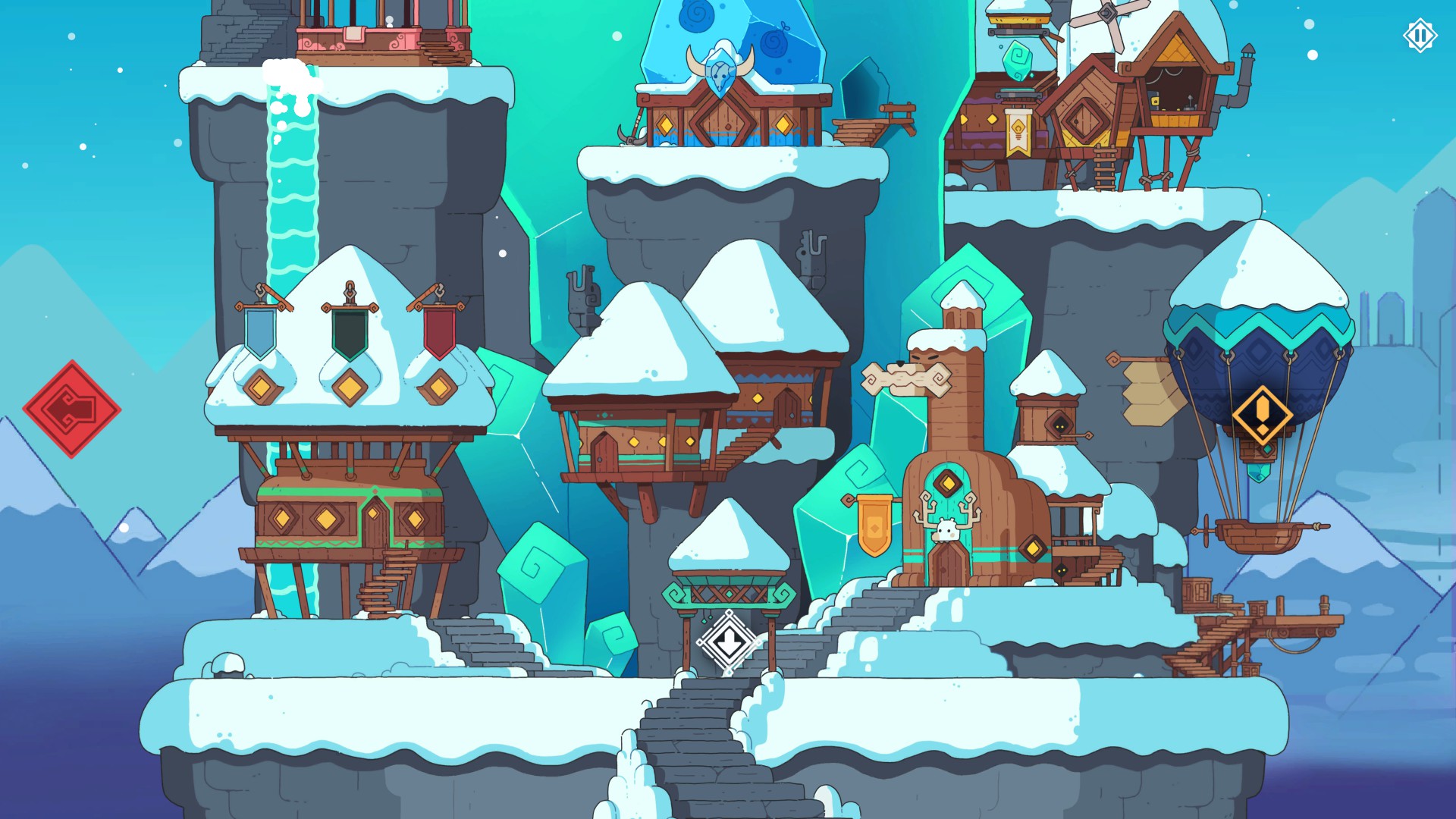
It doesn't help that many of its late-game unlocks are specific and convoluted enough to be not very appealing to pursue. Stacking 50 acorn shells on a single target, for example, in order to unlock a new charm—that's something I'd need to build my whole deck around, relying on certain lucky pulls, and then awkwardly prolong a battle in order to achieve. Some may relish the puzzle-solving element, but for me it feels like not playing to the game's core strengths.
But those are minor criticisms, really. Taken as a modest but punchy 12-hour challenge, it's a breath of fresh (cold) air for the genre, a tactical knot that's as tricky to unpick as it is accessible to approach. Let it lure you in with its charm, and then suck you into a fierce battle of wits where victory is always staring you in the face, if you're canny enough to find it.
A perfect balance of accessibility and strategic depth, elevated by charming visuals and buckets of personality.

Formerly the editor of PC Gamer magazine (and the dearly departed GamesMaster), Robin combines years of experience in games journalism with a lifelong love of PC gaming. First hypnotised by the light of the monitor as he muddled through Simon the Sorcerer on his uncle’s machine, he’s been a devotee ever since, devouring any RPG or strategy game to stumble into his path. Now he's channelling that devotion into filling this lovely website with features, news, reviews, and all of his hottest takes.
